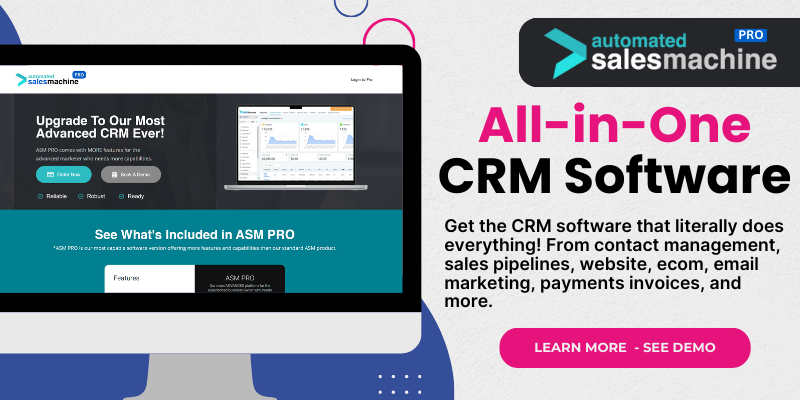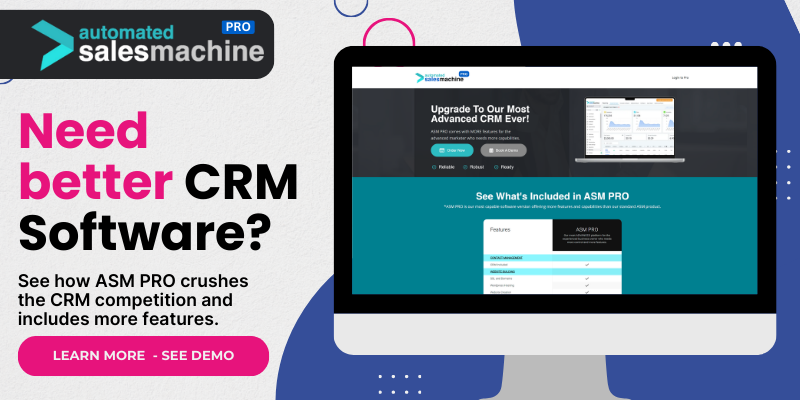1. Understanding Telemarketing Needs
Why Telemarketing Matters
Alright, let’s get one thing straight: telemarketing can be a game-changer for businesses. It’s direct, personal, and sometimes, it’s just the right nudge someone needs to make a purchasing decision. From my own experience, it’s helped me connect with customers and foster relationships that just wouldn’t happen via email alone.
Here’s the kicker: not every company is ready to dive headfirst into telemarketing. You’ve gotta consider your audience and your goals. Is your product something people want to talk about? If you’re selling luxury cars, for instance, people are way more receptive than if you’re selling something people might blindly scroll past.
Understanding the nuances of telemarketing helps tailor your approach. You need a clear idea of what you’re aiming for; whether it’s lead generation, selling, or simply nurturing existing leads. This clarity will guide your CRM choice—for me, it was essential.
Identifying Key Features
When I began looking for CRM software, I quickly realized that not all systems are created equal—especially when it comes to telemarketing. You gotta think like a marketer and ask yourself: what features do I need?
For instance, automated dialing is huge. It saves time and keeps me focused on the conversation. Having a CRM that provides call scripts helps too; it keeps me on track and ensures I’m not forgetting to mention key points. Either way, you’ll want something that enhances efficiency.
Don’t overlook integration features as well! My experience has shown me that linking your CRM with email, social media, or even customer service tools can create a smoother workflow. Why juggle multiple platforms when everything can be under one roof?
Budget Considerations
Look, I get it. When starting out, budgeting can be the nail-biter for any business. Spreading yourself too thin on fancy CRM software might lead to regret later. So, this is where I took a moment to balance features with what my wallet could handle!
Start by looking for a scalable solution. When I found CRMs that catered to smaller businesses with the option to expand as I grow, I felt a lot more secure in my decision. It’s about investing wisely; invest in a system that grows with you instead of breaking the bank upfront.
Lastly, consider free trials! They’ve saved my bacon more than once. Get in there, test it out, and see if it’s the right fit before making any long-term commitments.
2. Top CRM Software Options
Salesforce
Salesforce is like the Swiss Army knife of CRMs. It’s got a little bit of everything—and then some! For a telemarketer, it’s invaluable because it offers exceptional tracking features. You can manage your calls, follow up on leads, and analyze data all in one spot.
What I love about Salesforce is its flexibility. You can tailor it to your needs; whether you’re a solo entrepreneur or part of a massive team. It’s compact enough for simplicity, but robust enough to cater to complex organizational structures.
But hey, it can be overwhelming too. Make sure you have some time to get acquainted with all its features. Integration takes time, but if you’re committed, the payoff is huge!
HubSpot
HubSpot holds a special place in my heart because it’s user-friendly and offers an awesome free tier—who doesn’t love that? For anyone just dipping their toes into telemarketing, this is an ideal place to start.
The CRM is super intuitive and makes capturing leads easily. Its built-in tools for emails and marketing automation are a huge bonus for nurturing those leads over time.
Plus, HubSpot has fantastic resources! They have growth blogs, courses, and a community that supports you. It’s more than just software; it’s a whole ecosystem of support!
Zoho CRM
Zoho CRM is a hidden gem, if I’m being honest. I was pleasantly surprised by its affordability while still packing a punch with features. It has advanced analytics and reports that let you see what’s working and what isn’t in your telemarketing campaigns.
The automation features are also top-notch. They allow you to focus more on actual conversations rather than mundane tasks. Trust me, when you’re in a high-paced telemarketing environment, every second counts!
Integration is seamless too. It works well with numerous applications, making your telemarketing process smooth and efficient. Definitely worth considering if you prefer a reliable and cost-effective option!
3. Integration with Other Tools
Email Marketing Tools
Integrating your CRM with email marketing tools was such a game-changer for me. After using a couple of different software options, I learned that sending follow-up emails from the same platform you’re using for telemarketing streamlines the process significantly.
By connecting the two, I could track interactions more closely. It provided insights into how my clients were engaging after our calls. This, in turn, helped me tailor my pitches even better. Imagine having all that data handy—it’s like having a superpower!
There’s no reason to have information scattered all over the place. Keeping everything integrated ensures that the transition from call to follow-up feels natural and keeps the conversation ongoing.
Customer Support Systems
Once I integrated my CRM with customer support systems, my satisfaction scores skyrocketed. The synergy between marketing and customer service is vital, especially when you’re trying to build long-lasting relationships with clients.
Having all inquiries and previous interactions in one place made my job so much easier. Empowering the customer support team with historical data means they can tackle issues and follow up with a more personalized touch.
And let’s be real, who doesn’t appreciate smooth sailing when a customer has a question? Seamlessly connecting both parts of the business makes a strong impression on clients.
Social Media Platforms
I’ve found that integrating social media with a CRM can amplify your outreach. Imagine being able to see not just email opens or call behaviors, but also social interactions! That’s right; it can give you a broader view of customer sentiment.
From sharing valuable insights to tracking customer engagements across platforms, this integration paints a clearer picture. It’s all about meeting your customers where they are—what could be better than that?
When you build those insights, you can tailor your telemarketing strategies accordingly. It becomes less about selling and more about engaging. That’s a major win in my book!
4. Customer Support and Training
Onboarding and Training
When I first got my CRM set up for telemarketing, I didn’t really grasp the importance of onboarding and training sessions. These are essential! Good customer support will guide you through every step, helping you set up and utilize the software to its fullest potential.
A knowledgeable support team can help clarify features that you may not fully understand, allowing you to hit the ground running. This has made a massive difference in how quickly I adapted compared to times I had to struggle through the learning curve alone!
Make sure to ask about available training resources. A good vendor will often provide tutorials, webinars, or even dedicated onboarding sessions. These are so valuable—trust me, it’s worth it!
Ongoing Support
Let me tell you, having ongoing customer support is like having a safety net. As your telemarketing strategy evolves, you’re bound to have questions or need assistance. I’ve had times where I reached out, and the response times were incredible!
A reliable support team isn’t just about answering questions; they should help you leverage the full potential of the software. Whether it’s optimizing workflows or analyzing data, having accessibility to support is essential for long-term success.
Before committing, do some digging: check customer reviews and testimonials. If others rave about the support, it’s likely you’ll experience similar results. I know I did!
Community and Resources
Lastly, a strong community around your CRM can be an absolute treasure trove of knowledge. When I discovered forums and social media groups centered on my CRM software, I was amazed at how much info was shared among users.
These communities are fantastic for real-life anecdotes and tips from seasoned users. Need to solve an issue or just looking for best practices? These spaces can sometimes offer solutions that you won’t find in official documentation.
Keep an eye out for user meetups, webinars, or training sessions hosted by peers. I’ve attended a few, and connecting with others got me insights I just couldn’t find elsewhere—plus, you just might make a new friend!
5. Evaluating Performance and Making Adjustments
Tracking Metrics
Alright, we’ve set up, integrated, and trained—now it’s time to shine! Tracking metrics is where the magic happens. For me, understanding KPIs like conversion rates, leads generated, and call outcomes was crucial.
Once you have a handle on the numbers, you can adjust your telemarketing strategies accordingly. This part is all about refining your approach and making it work better and more efficiently over time.
Don’t shy away from utilizing your CRM’s built-in analytics tools—they are gold! With these insights, you can see what’s effective and pivot easily if something isn’t working. It makes the journey a whole lot smoother!
Soliciting Feedback
I can’t stress enough how vital it is to solicit feedback from your team and clients. It’s a simple yet powerful step! I often asked my team what they felt worked during calls and what they thought could improve.
Whether it’s through a quick team huddle or even a survey, gathering those perspectives gives you a more comprehensive view of beyond the numbers. Personal insights can reveal the ‘why’ behind the data.
Your clients are your best teachers too. Encourage them to share their experiences—what they loved or where they felt things could improve. This ongoing dialogue not only helps you grow but strengthens your relationships.
Adapting Strategies
At the end of the day, adaptability is key. I learned early on that sticking to the same monotonous routines could stiffen growth. Reevaluate and don’t be afraid to tweak your strategies in light of new findings!
Whether that means altering your scripts, changing your target segments, or even adjusting the timing of your calls, experimentation is crucial. The telemarketing landscape is ever-changing, and those who adapt are the ones who thrive!
As many of my mentors have said: “Keep pushing the boundaries, or risk falling behind.” Take those insights, iterate, and continue growing. Your efforts will be worth it in the long run!
FAQs
What are the top CRM software options for telemarketing?
Some of the top options include Salesforce, HubSpot, and Zoho CRM, each offering unique features to suit various telemarketing needs.
Why is CRM software important for telemarketing?
CRM software helps manage customer relationships effectively by tracking interactions, automating processes, and enhancing communication strategies, crucial for successful telemarketing initiatives.
How do I choose the right CRM for my telemarketing efforts?
Consider your business needs, budget, essential features, and integration capabilities. A trial period can also help determine if the software is a good fit.
Can CRM software improve telemarketing results?
Absolutely! Proper CRM systems streamline your telemarketing processes, allowing for better data management, follow-ups, and ultimately, improved results.
Is training necessary for using CRM software effectively?
Yes! Training ensures that you and your team can maximize the CRM’s features, improving your telemarketing framework and overall performance.

